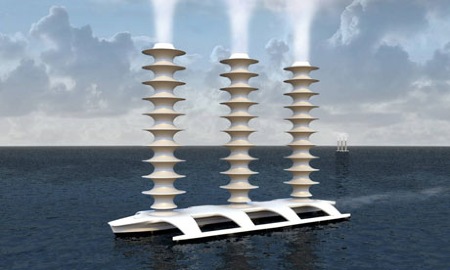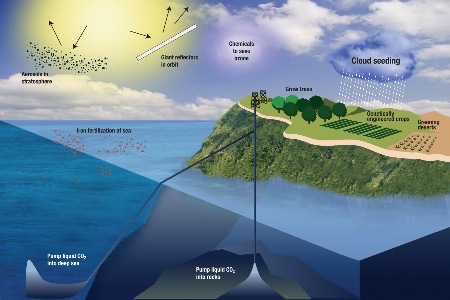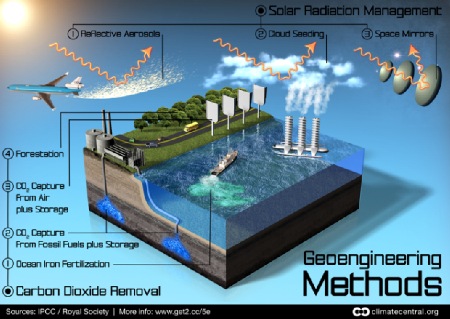











 |
 |
 |
 |
 |
 |
 |
 |
 |
 |
 |
 |
 |
 |
 |
 |
 |
 |
 |
 |
 |
 |
 |
 |
 |
 |
 |
 |
 |



Geoengineering, geological engineering, or geotechnical Engineering deals with the discovery, development, and production and use of earth resources, as well as the design and construction of technologies to harvest these resources, change weather patterns and thus reverse negative effects of other technologies.
Geoengineering is the application of geosciences, where mechanics, mathematics, physics, chemistry, and geology are used to understand and shape our interaction with the earth.
Geoengineers work in areas of
(1) mining, including surface and subsurface excavations, and rock burst mitigation;
(2) energy, including hydraulic fracturing and drilling for exploration and production of water, oil, or gas;
(3) infrastructure, including underground transportation systems and isolation of nuclear and hazardous wastes; and
(4) environment, including temperature changes, reduction of CO2 and other gases in the atmosphere, groundwater flow, contaminant transport and remediation, and hydraulic structures.
 Engineer Stephen Salter's design for an unmanned ship designed to generate clouds and reflect sunlight away from the earth.
Engineer Stephen Salter's design for an unmanned ship designed to generate clouds and reflect sunlight away from the earth.
Avoiding "overshoot"

The IPCC projects that atmospheric concentrations of
carbon dioxide emissions are unlikely to stabilise at 450 parts per
million (ppm), accepted by the international community as the safe limit
to ensure that global average temperatures do not exceed the 2 degrees
Celsius danger level. It is more likely that concentrations could
"overshoot" to around 550 ppm (if not higher by other less conservative
projections). The leaked draft concludes that "essentially any"
emissions target can be achieved "regardless of the near‐term path" of
overshoot "by shifting emissions reductions to the future":
"There
are no published scenarios depicting a pathway returning to 450 CO2‐e
[emissions] by century's end without a negative emissions option when
delayed participation is imposed. The vast majority of published 450
CO2‐e scenarios involve overshoot during the century and include a
negative emissions technology."
The draft thus recommends "carbon
negative" energy technologies that might help to draw down carbon from
the atmosphere. These include "large scale utilisation of BECCS"; coal
and natural gas with carbon capture and sequestration (CCS) - carbon
emitted from burning fossil fuels is captured and injected underground
where it is stored indefinitely; nuclear power; and large hydroelectric
plants.
Carbon capture, or multiplier?

The problem, Biofuelwatch's co-director said, is that there is no scientific consensus on whether these technologies actually work. CCS technology is already being used to facilitate intensified fossil fuel exploitation. In bioenergy, it has involved "capture of fermentation in ethanol refineries":
"... so far much of carbon captured from bioenergy and other processes is ultimately used for Enhanced Oil Recovery – injected into depleted oil wells to create pressure enough to force remaining difficult to access oil out. This can hardly be considered 'sequestration' or an effective approach to solving the climate problem."
She added that "burning wood for electricity and heat releases up to 150% as much CO2 per unit of energy generation than does coal" excluding emissions from "deforestation, harvesting and transportation."
According to Dr Smolker, CCS cannot be viewed as "carbon negative" due to "the high costs, and associated high added energy demand for capture, transport, compression and injection." Even more problematic, she said, is that there is "little real world testing" of whether CO2 pumped into underground cavities "will remain in situ" indefinitely, or be released, which she describes as "a dangerous gamble."
Biofuelwatch also criticised the IPCC draft report's recommendation of large-scale bioenergy projects. Bioenergy "should be considered a driver" of emissions from agriculture, forestry and other land use, Smolker said, "not a means of mitigation." The growing use of bioenergy as a substitute for fossil fuels is encroaching increasingly on land use, and in turn escalating food prices, intensifying land grabbing, and increasing demand for crops, livestock, wood and so on:
"Lands and ecosystems cannot at the same time both provide large quantities of biomass for bioenergy, and still securely act as 'carbon sinks.' It is not possible to have it both ways."
Currently, just under 40% of US corn production is dedicated to ethanol although it provides just "a pittance of transport energy." The large areas of land required for meaningful bioenergy production means it would simultaneously undermine food production while contributing to "escalating food prices." Although the IPCC proposes bioenergy as the solution to renewable energy, "it can never provide more than a tiny fraction towards the current and projected growth in demand for energy."
Broken Climate needs Fixing

Stephen
Salter, a professor emeritus of engineering design at the University of
Edinburgh who has proposed cloud enhancement as one mechanism of
geoengineering to address climate change, said that given the import of
dangerous warming, techniques to reduce carbon in the atmosphere must be
part of the toolbox. But he said the focus should be on the Arctic:
"Those
working on geoengineering are largely doing so reluctantly. The concern
is that we need to ensure technology is available in case events occur
more quickly than expected. The IPCC has not fully accounted for certain
feedbacks involving black carbon, methane release, and the rapid loss
of the Arctic summer sea ice. A technique likemarine cloud brightening by
spraying seawater onto clouds to increase their reflectivity, could
save the sea ice and help cool the climate with relatively little
side-effects that can be controlled with careful application."
But
other geoengineering techniques suffer from less certainty, said Prof
Salter, who is a member of the Arctic Methane Emergency Group (AMEG).
"Many major proposals suffer from debilitating costs and practicalities,
and would take too long – up to a century or more - to work. And their
risks are less understood."
Prof Stuart Haszeldine, a
geoscientist also at the University of Edinburgh specialising in CCS,
said:"Ultimately a full, immediate transition to renewables is the right
imperative, but it cannot happen overnight due to the engineering costs
and practicalities. So we must reduce our carbon emissions while we are
still relying on fossil fuels. Our current emissions trajectory is
heading for catastrophe. CCS would allow us to draw down emissions
during the transition to renewables.
Every component of CCS has
been practiced separately in the industry for decades, so putting them
altogether to minimise our carbon footprint makes sense. Several
large-scale commercial CCS enterprises will become operational this
year, such as the coal-fired plant in Kemper County.

















